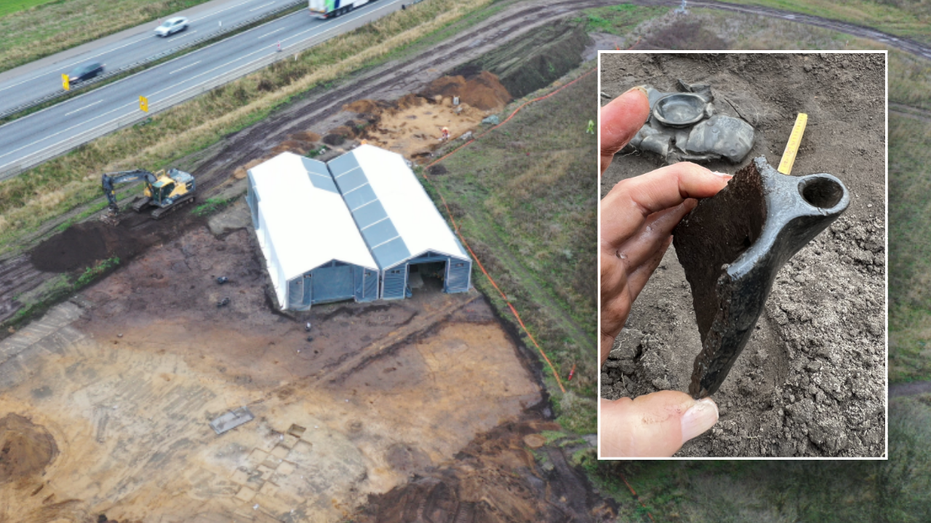Archaeologists recently found an ancient Roman helmet in an unusual location, a Danish village.Vejle Museums announced the discovery of numerous ancient artifacts, including the Roman armor, in a press release published Jan. 29. The excavation took place in the town of Løsning in the fall.The statement explained that archaeologists noticed “two unusual iron plates” during a dig and were initially unsure what they were.”At first glance, it was unclear what these plates had belonged to,” Vejle Museums said. “However, using X-ray imaging, conservators and archaeologists were able to see beneath the thick layers of rust covering the objects.METAL DETECTORISTS DISCOVER HOARD OF PRICELESS GOLD COINS DATING BACK TO BIBLICAL TIMES”The result revealed an extremely rare find: the remains of a Roman helmet.”This marks the first time an ancient Roman helmet was found in Denmark. According to the press release, the two plates “consist of a neck guard and a decorated cheek guard from a so-called crest helmet, a type used in the Roman Empire in the 4th century.”METAL DETECTORISTS STUMBLE ACROSS 1,200-YEAR-OLD TREASURE, UNUSUAL CHRISTIAN ARTIFACT IN VIKING GRAVES”Roman helmet finds from the Iron Age are exceptionally rare in southern Scandinavia, and there are no direct parallels to this discovery,” officials said.In addition to the Roman artifacts, multiple Iron Age weapons and armor were found, including “an incredibly valuable chainmail shirt.” Experts believe it was buried by a chieftain.”The manner in which the war equipment was buried suggests it was an offering to higher powers,” the release noted.CLICK HERE TO SIGN UP FOR OUR LIFESTYLE NEWSLETTERThe chainmail was found along with fragments of bronze neck rings, or “oath rings,” which officials said symbolized power and influence. “Only a very small number of chainmail shirts from the Iron Age have been found in the southern Scandinavian region,” the statement noted. “The chainmail from Løsning Søndermark is particularly remarkable as it is the first discovered in association with a settlement, rather than in a burial or bog find.For more Lifestyle articles, visit foxnews.com/lifestyle”Producing chainmail required expertise, access to resources, and a significant, sustained effort. As a result, these costly pieces of armor were owned exclusively by the highest warrior elite in society.”Archaeologists will now analyze deposits where the weapons were buried to determine if there was any greater significance to the burials.”The nature of these deposits suggests that the weapons were part of ceremonies or sacrificial rituals associated with a chieftain’s residence,” Vejle Museums said. “This indicates that they are not remnants of a weapons workshop, military barracks, or similar contexts.”Ongoing excavation work and subsequent analysis of the materials will hopefully reveal whether the equipment belonged to local warriors or if it represents spoils of war from a defeated enemy.”
/
February 5, 2025
Ancient Roman helmet turns up in unusual location: ‘Exceptionally rare’







